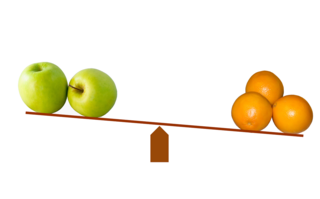DELTA has been conceived as a comparative project from the outset – we are not focusing on one place or social group, but on different groups of people living in different parts of the world. At the same time, we are not researching four isolated realities, but relate them epistemologically and methodologically. This means, on the one hand, that we do not assume they are separate cases to begin with, and we acknowledge that lives in these different deltas – with all their dissimilarities – are situated in the same global dynamics of cultural circulations, international development, economic crises and climatic change. On the other hand, this means that we are developing a theoretical and methodological approach to explicitly address the similarities and differences between people’s life worlds within and across these deltas.
While this seems like a rather straightforward setup, it is fairly tricky to operationalize. First of all: what exactly is it that we are comparing? What are our ‘cases’ and ‘variables’? Are our four subprojects ‘case studies’ for answering a common set of questions? Weren’t they supposed to be independent research projects, sensitive to their respective local context and agendas? And second: how can we speak of ‘comparison’ if we do not have a well-structured framework of ‘boundaries’, ‘controls’, ‘dimensions’ and the like? Furthermore: after all that has been said and written, especially in anthropology, about its inherent problems, why would we even bother to strive for comparison? Wouldn’t that be reactionary, and disregarding the valid critique of cultures as bounded and homogenous, of perpetuating colonial ways of knowing, and of abstracting specific aspects of everyday life beyond recognition and meaning?
Discussing some of the recent literature on comparison in anthropology and beyond made us realise, however, that not only is comparison much more than the structured, large-N, reductive and statistical endeavour that is frequently invoked when we speak about The Comparative Method, but also are we not aiming to compare ‘cultures’, if ever there was such a thing. To stick to the multiplicity of comparisons for a moment: the collection edited by Gingrich and Fox (2002), for example, makes clear that neither are all classic methods of comparison doomed to fail, nor is there a lack of alternative approaches. Some of the contributors to this collection even argue that we, as anthropologists, have a moral duty to compare, and make our comparative knowledge explicit in public debates. Fox and Gingrich point out that even if our comparison might not be explicit and planned, we cannot do anthropology without comparing.
Candea (2016) takes this further and argues that we have to discuss more openly, and be more critically aware of, the ways in which we compare in anthropology, since we cannot do without it. He traces how what he calls ‘frontal comparison’ (i.e. between ethnographic findings and specific/assumed aspects of ‘the West’) has been recuperated from the writing culture debates in the form of ‘cultural critique’. The other kind of comparison, what he calls ‘lateral comparison’ (i.e. between material from different ethnographies), however, has not been redeemed since those debates. Candea points out that none of the two kinds of comparisons is possible without the other, and if we focus our professional attention only on frontal comparisons, we reduce lateral comparisons to chance and haphazard connections.
So, if we cannot do anthropology – or any other research, for that matter – without comparing, how should we best go about it? One relevant step towards addressing this question would be to delineate more explicitly what it is that we are comparing. What are our cases? Here, Ragin and Becker’s (1992) edited volume can help guide us: they elaborate that ‘a case’ can mean a host of different things in different research setting, from an assumed universal entity like ‘the family’ to a theoretical construct like ‘industrial society’. What exactly a case is in any particular study thus emerges out of that study’s goals and framings, and the research process itself. The fact that what ‘a case’ is has often been taken for granted, however, is part of the reason for an alleged incommensurability between different disciplines, the editors argue. Notwithstanding the variety of possible cases, Ragin and Becker emphasise that equally important to asking what the case is in any research endeavour, is the question of what this is a case of. In other words, whether or not conceived as a case study, all research projects are cases of something else, namely the respective debates and fields to which they hope to contribute.
In the DELTA project, our cases are not ‘cultures’; neither are they ‘local groups’ or ‘communities of practice’. Rather, what we are studying are ways of living with hydrosocial volatilities. We are not juxtaposing one delta with another, or Brazilians against Kenyans, or Arctic water with tropical water; we are not aiming to describe, exhaustingly or representatively, the populations of the Irrawaddy Delta or Mackenzie Delta, not even of a single ethnic group within any of these deltas. What we are focusing on, and what we hope to compare, are the everyday practices and stories that constitute differently situated ways of living in hydrosocially volatile worlds. This can include means of securing a livelihood, ways of traveling and relocating, and relations of belonging. Of course these various ways and means and relations are part of ethnic, national, climatic and other contexts, but these are not our main focus. Instead we hope to compare these practices and narratives as emergent from distinct and shifting sets of relationships – social, material and semiotic – but not as functions of allegedly bounded or self-contained spaces, groups or cultures.
We consider it an opportunity, rather than a caveat, that the cases we compare are in part shaped by similar processes, including a spreading global discourse of environmentalism and delta management, a shared world market, and the meteorological irregularities that come under the label of climate change. In this, our approach is similar to that outlined by Mollinga and Gondhalekar (2014), who take the ubiquity of the Integrated Water Resource Management (IWRM) discourse as a starting point to develop an approach for comparative analysis of water resource management. Whereas Mollinga and Gondhalekar devise a fairly elaborate, and not always intuitive, framework that expands from an initial study to more and more different studies, our approach in DELTA is – comparatively, indeed – more modest: four studies, conducted simultaneously, with regionally specific foci, but with a set of common sensibilities and questions, like those developed during our ‘delta labs’.
One reason why our approach is less elaborate, and our cases less strictly defined, than in other comparative endeavours is perhaps the purpose of our respective projects. While Mollinga and Gondhalekar, for instance, aim to find ‘structure in diversity’, and where others hope to uncover rules, regularities and causality in social life, we look for similarities and differences in hydrosocial volatilities in order to uncover blind spots of, and formulate viable alternatives to, the large-scale and reductive frameworks that dominate delta knowledge today. The purpose of our comparison is not to elaborate generalisations for socio-ecological life; its end product is not a set of laws that state “if this, then that”, ceteris paribus. Rather, we want to juxtapose our research processes and findings in order to debate to what extent and why similarities exist in the lives of these people in rather different deltas, and in order to document and discuss the wide variety of realities that hydrosocial volatility comprise today. The end product is, hopefully, a learning opportunity for other scholarly and policy-related approaches to delta life, and a growing awareness that global crises in water, economy and climate can be otherwise than we previously imagined.
References
Candea, Matei. 2016. De deux modalités de comparaison en anthropologie sociale. L’Homme 218: 183–218.
Gingrich, Andre and Richard G. Fox, eds. 2002. Anthropology, by Comparison. London: Routledge.
Mollinga, Peter P. and Daphne Gondhalekar. 2014. Finding Structure in Diversity: A Stepwise Small-N/medium-N Qualitative Comparative Analysis Approach for Water Resources Management Research. Water Alternatives 7(1): 178-198.
Ragin, Charles, C. and Howard S. Becker, eds. 1992. What Is a Case? Exploring the Foundations of Social Inquiry. Cambridge: Cambridge University Press.

